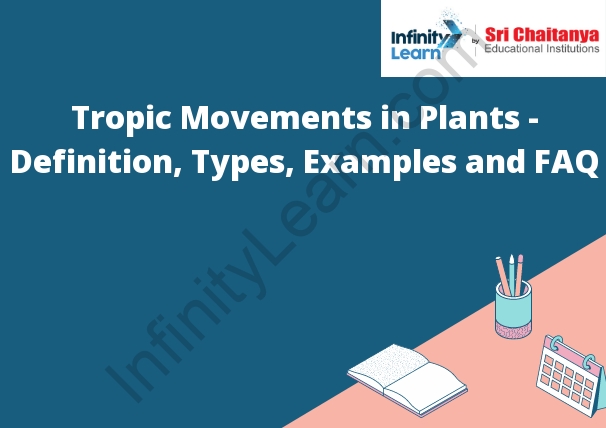Table of Contents

Types of Movements in Plants
There are three main types of movements in plants- the expansion of cells due to water uptake, the turgor pressure exerted by the cells, and the growth of the plant.
The expansion of cells due to water uptake is what causes plants to grow in height. The water is taken up by the roots and travels up the stem, eventually reaching the leaves. The cells in the leaves expand and the plant grows taller.
The turgor pressure exerted by the cells is what keeps the plant upright. The cells in the leaves are filled with water and the turgor pressure keeps the leaves upright. If the turgor pressure is released, the leaves will fold up.
The growth of the plant is due to the expansion of the cells in the roots and the stem. The cells in the roots expand as they take in water and the cells in the stem expand as the plant grows taller.
Phototropism
When a plant is exposed to light, its cells produce a hormone called auxin. Auxin is responsible for many plant growth responses, including phototropism. Phototropism is the growth response of a plant that causes it to bend towards light. This response is caused by the differential growth rates of cells on the shaded and illuminated sides of the plant. The cells on the shaded side of the plant produce less auxin than the cells on the illuminated side. This difference in auxin levels causes the cells on the shaded side to grow more slowly than the cells on the illuminated side. This difference in growth rates causes the plant to bend towards the light.
Geotropism
Geotropism is the directional growth response of a plant or any other organism to the force of gravity. The term was coined in 1880 by the German botanist Karl Ernst von Baer. The term geotropism comes from the Greek words γῆ (gē), meaning “earth”, and τροπή (tropē), meaning “turning”. The gravitational force causes the plant or other organism to grow in a particular direction. There are three types of geotropism: negative geotropism, positive geotropism, and amphitropism.
Chemotropism
Chemotropism is a directional growth response of a plant or fungus to a chemical stimulus. The stimulus can be from another organism, such as a bacterium that secretes a chemoattractant, or from the environment, such as a change in light or gravity. The response can be either positive (toward the stimulus) or negative (away from the stimulus).
A plant’s ability to grow in a particular direction in response to a chemical stimulus is called chemotropism. The stimulus can be from a source outside of the plant, such as light or gravity, or it can be from a source inside the plant, such as a hormone or nutrient. There are two types of chemotropism: positive and negative. Positive chemotropism is when the plant grows in the direction of the stimulus, and negative chemotropism is when the plant grows away from the stimulus.
Hydrotropism
Hydrotropism is the directional growth of a plant or other organism in response to a water stimulus. Plants can grow towards or away from water sources, depending on the species. For example, the roots of some plants grow towards water sources, while the leaves of other plants grow away from water sources to avoid dehydration.
Hydrotropism is a type of tropism, or directional growth, in plants. It is the response of a plant to a water stimulus. Plants can grow towards or away from water, depending on the plant’s needs. For example, a plant that needs a lot of water will grow towards a water source, while a plant that needs less water will grow away from it. Hydrotropism is important for plant growth and development, and it helps plants to optimize their use of water resources.
Thigmotropism
Thigmotropism is the curvature of a plant’s stem or leaf in response to touch. The stimulus of touch causes the plant to produce a hormone called auxin, which causes the plant to grow more on the side that was touched.
Thigmotropism is a type of tropism in which a plant or animal responds to a physical stimulus such as touch or pressure. This response can be either positive (toward the stimulus) or negative (away from the stimulus). For example, a plant may grow toward a light source, or curl up in response to being touched. Thigmotropism is often used to protect plants from being eaten or damaged.
Thigmotropism is a type of tropism that is characterized by a plant or animal’s response to touch or contact. This response can be either positive or negative, and can cause the plant or animal to move towards or away from the source of the contact. Thigmotropism is thought to be controlled by a plant’s or animal’s mechanoreceptors, which are sensory cells that are sensitive to physical stimuli like touch or vibration. Tropic Movements in Plants – Definition Types Examples and FAQ.









